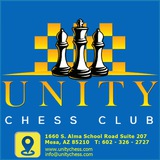Better was 22.bxc5, strengthening the position in the centre. However, because of the weakness of the kingside light squares, the advantage would still lie with Black.
With such a bishop, White has to surrender a rook, and the rest is a matter of technique.
25.Bf2 Qh3 26.Rxe4 Rxe4 27.Qxd3 Rxf4 28.d7 Rh4 29.Rc8 Qxh2+ 30.Kf1 Qh3+ 31.Ke2 Qe6+ 32.Kf3 Rh5 33.Nb6 Rf5+
Unity Chess Club
Tigran Petrosian Vasily Smyslov Moscow ch-URS 1949 Black to move
The assessment of such positions depends on how well White controls d5. If the white bishop were on b3, instead of e2, the only way for Black to get decent play would be to sacrifice the exchange on c3, and then take on e4 – once again, the whole battle revolves around the central squares. However, with the bishop on e2, Black can eliminate the blockade of d5 with a pawn break:
More tenacious was 24.exd5, although after 24...e4 25.Nxe4 Bxb2, Black still has a large advantage.
24...Bxd5 25.exd5 Rxc2 26.b3 e4 27.g4 e3 28.Rg2 Rd2 29.Rxd2 exd2 30.Bd1 Rxd5
With rooks on the board, the opposite-coloured bishops are not such a drawing factor, and the realisation of Black’s advantage does not pose any great difficulties.
31.Kg1 Kf8 32.Kf1 Bg5 33.a4 h5 34.h3 h4 35.axb5 axb5 36.Rf2 Ke7 37.Rf3 Re5 38.Be2 Rd5 39.Bd1 Kf6 40.Rc3 Bf4 41.Ke2 Kg5 42.Rf3 b4 43.Kf1 Re5 44.Be2 Be3 45.Bd1 Kf6 46.Be2 Re4
Unity Chess Club
Miguel Najdorf Robert Fischer Santa Monica 1966 White to move
If Black could succeed in blockading e5, he would have an excellent game. However, it is White’s move, and he carries out a temporary pawn sacrifice, to open up play for his pieces on the light squares:
The black pieces are totally lacking mobility, whilst White’s cooperate excellently and control all the key squares.
